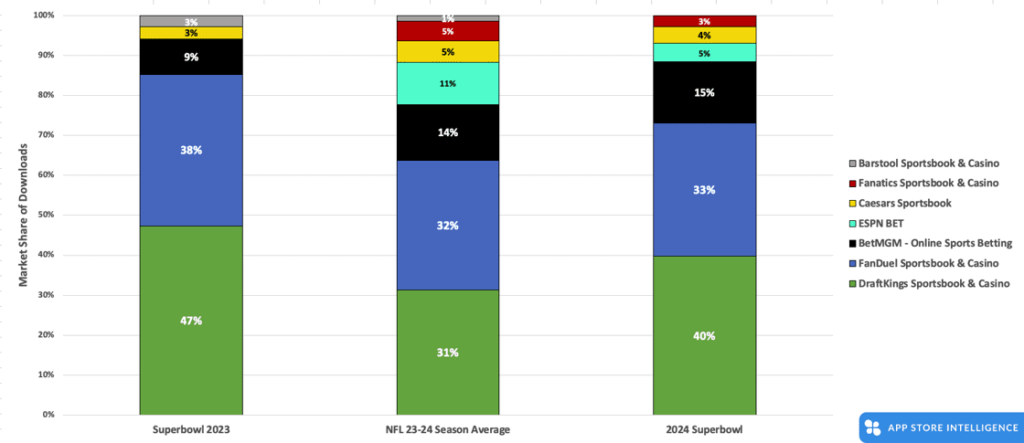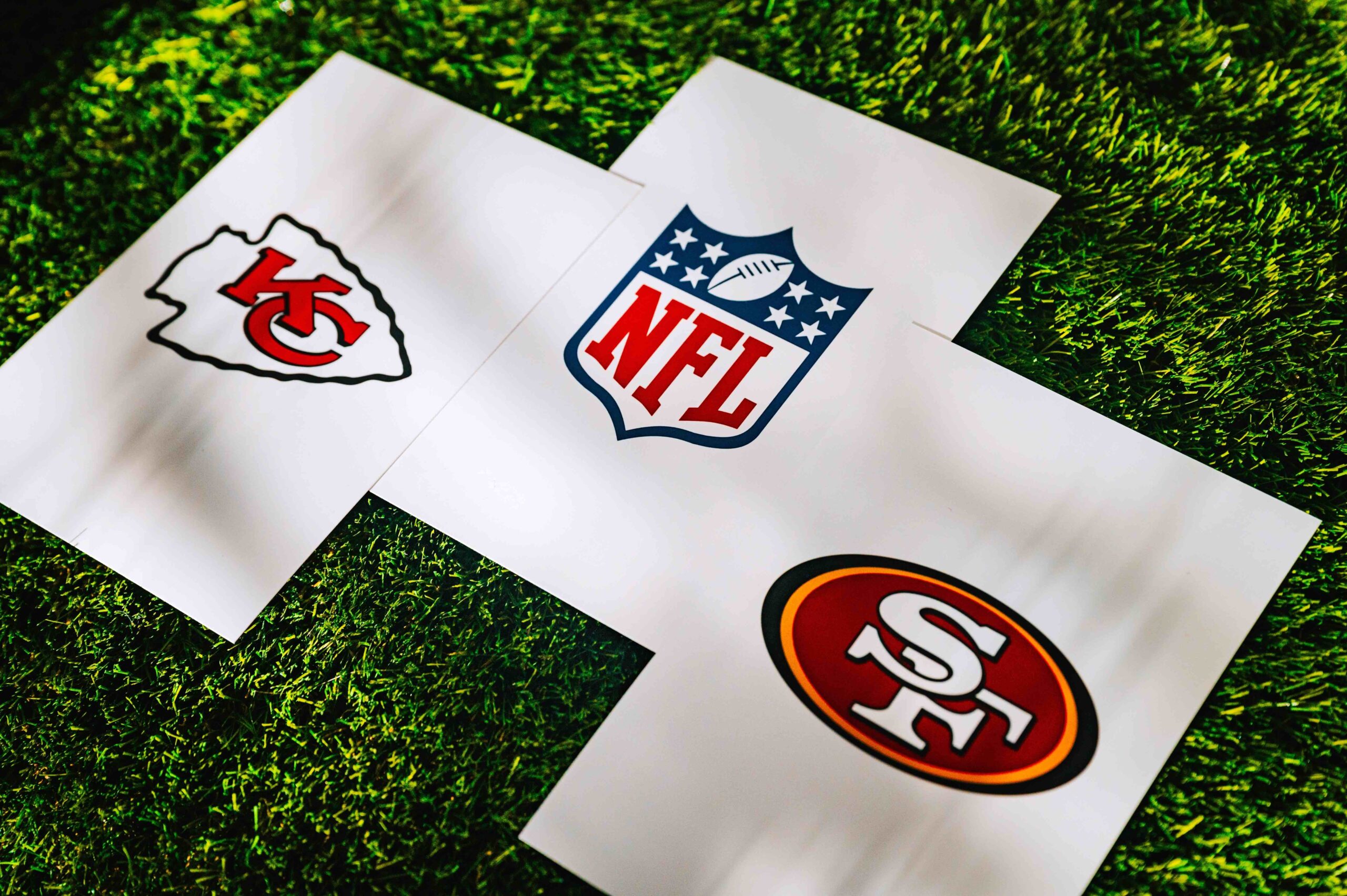This was first published February 14, in our weekly newsletter Apptopia Insight. To receive insights like this weekly, sign up here.
- DraftKings (DKNG) led all Online Sportsbooks in market share by new users on Super Bowl Sunday just as it did last year; meanwhile, FanDuel held the #1 spot all season.
- On Super Bowl Sunday, users of both FanDuel and DraftKings favored FanDuel (FLUT), according to cross-app usage analysis, spending 55% of time on FanDuel vs. 45% on DraftKings.
- Our data indicates potential disappointment for PENN earnings tomorrow as ESPN Bet fades as a competitive threat with only 5% share on Sunday, compared to its season average at 11%.
Online Sportsbooks market share by new users

In late January, Flutter listed on the NYSE (FLUT) as a secondary listing to compete in the U.S., where it is market leader and where its primary competitor, DraftKings, is listed. DraftKings, reporting tomorrow after the close, has also claimed to be the US market leader. Our data from Super Bowl Sunday and the NFL season shows the two are indeed consistently swapping out as #1 in growth and/or engagement.
For the second year, DraftKings’ promotions successfully acquired more new users for the big game. FanDuel pulled ahead by 1 point as the leader for the NFL season, though we point out in our Q3 analysis, that the NBA season overlap and its traction with basketball fans is a contributing factor.
Market share by engagement was even during the Super Bowl, so we went a level deeper to see cross-app usage among devices in our panel that use both apps. Users of both FanDuel and DraftKings favored FanDuel during the Super Bowl (55% to 45%, respectively) and slightly during the season (51% to 49%, respectively).
Users of both DraftKings and FanDuel spent more time on FanDuel

Through the end of Q1, we will be watching DraftKings’ and FanDuel’s ability to retain new users during the transition to spring sports. Last year, churn peaked 4-6 weeks after the Super Bowl.





